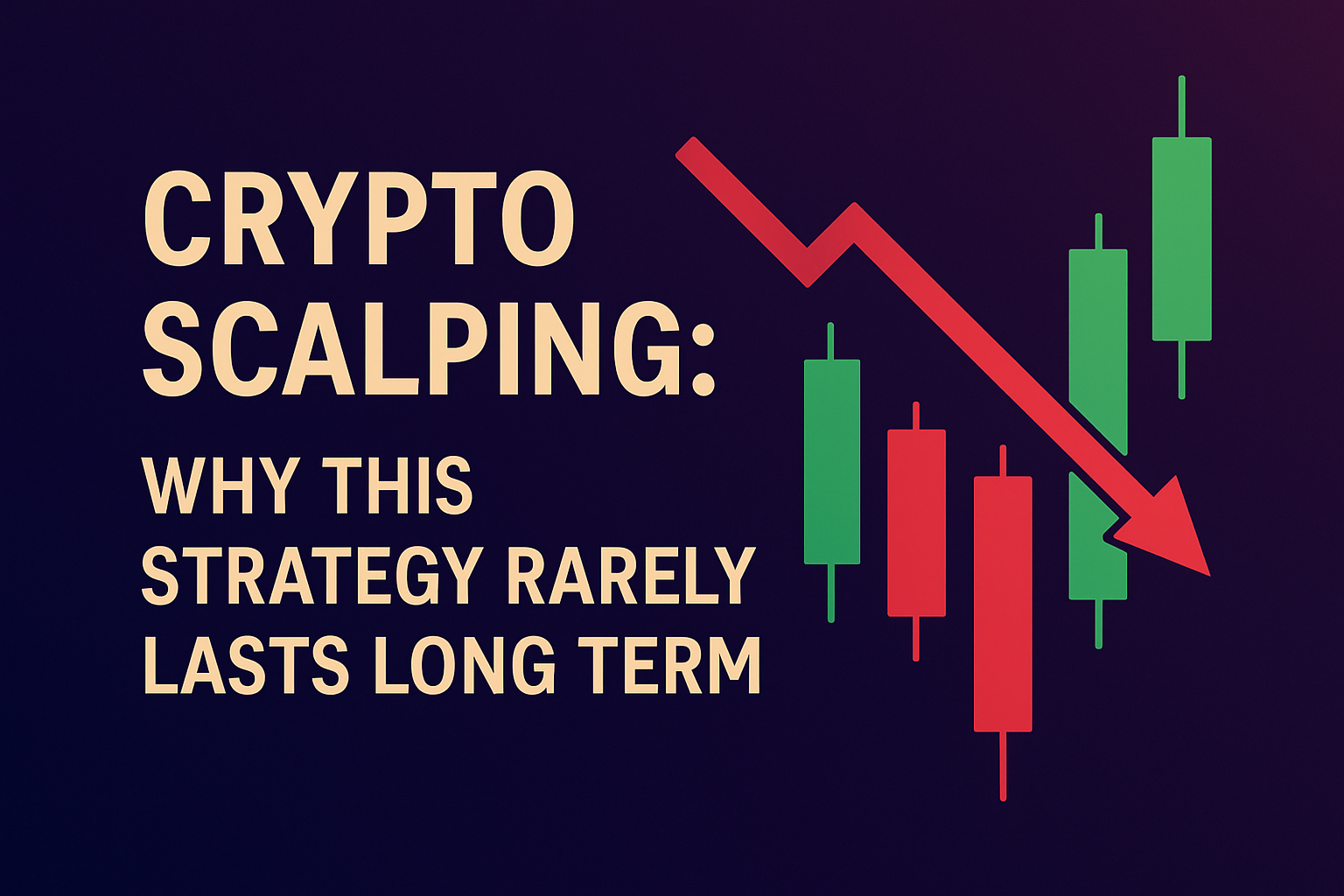Aug 8, 2025
Crypto Scalping – Why This Strategy Rarely Works Long Term
Learn what crypto scalping is, the risks involved, and why most traders lose money with this strategy despite multiple profitable trades.

What is crypto scalping?
Scalping is a trading strategy focused on achieving small but frequent profits. Traders often set take profit (TP) at a very low level, such as 0.50% or less, allowing them to execute dozens of trades per day.
This creates the impression of quick results – several or even dozens of closed “green” trades in one day can feel like success. However, the real challenge appears when a stop loss (SL) is triggered.
How stop loss works in scalping
In scalping, stop loss is usually set much deeper than take profit – often at -3%, -5%, or even -10%. A single stop loss can wipe out the profits from dozens of successful micro-trades.
On top of that, exchange fees reduce profitability even further. Typical fees are around 0.10% for buying and another 0.10% for selling. This means that with every 0.50% profit, you’re giving away about 40% of your earnings to the exchange.
The result? Even if your daily results are positive for a while, over the long run the exchange is usually the biggest winner.
Why scalping is hard to sustain
Small gains vs. big losses
In long-term trading, higher TP levels – for example 10% or 20% – are more effective, as they can offset potential losses. In scalping, a single deep stop loss can erase several days of gains.
Impact of market trends
Scalping can sometimes work during a bull run or sideways market, but the problem is you can’t predict a bull run in real time. Often, by the time you identify one, it’s already coming to an end.
Slippage risk
With low-volume coins, slippage can occur – the execution price differs from the expected price. In scalping, where TP is only 0.50%, even a small slippage can turn an expected profit into a loss.
Why many traders quit scalping
At first glance, scalping seems exciting – fast trades, frequent closes, and a feeling of control over your capital. In reality, low margins, fees, slippage, and inevitable losses make this strategy difficult to maintain in the long run.
Many experienced traders admit that scalping eventually led to gradual capital loss. The key to consistent profitability is maintaining a favorable risk-to-reward ratio (R:R) – something scalping rarely delivers.
Conclusion
Crypto scalping can be used as a short-term strategy in very specific market conditions, but it’s not optimal for long-term capital growth. If you want stable results, it’s better to focus on strategies with higher TP levels, balanced SL, and historical data analysis.
See how to achieve better results without the typical scalping risks – try Intralogic Backtesting Bot, which automatically selects optimal TP and SL parameters based on years of historical data.
READ MORE


